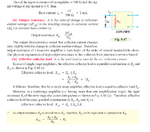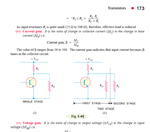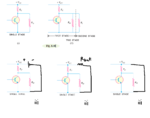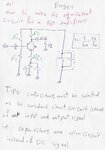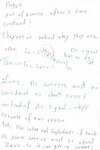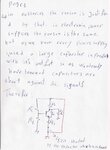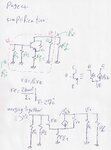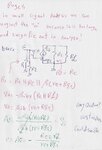milan.rajik
Banned
I read the book "Principles of Electronics" by V K Mehta
I am having trouble understanding effective collector load. In that book chapter 8 page nos 172 - 173 (see attached images) he says that Ro is in parallel with Rc. I don't understand this. Can you please explain how Ro which is in series with Rc becomes parallel? There is two paths Rc to ground through CE and Rc to ground vis Ro.
In single stage amplifier if there is Coupling capacitor at collector then varying collector current flows through it and DC is blocked. This current will create a voltage drop across Ro or (RL, load resistor)
Please explain how he says Rc is in parallel with Ro in single stage amplifier and Rc is parallel with Ro and Ri in multistage amplifier. Please I need to understand this clearly.
Is it because battery can be replaced by its internal resistance and as internal resistance is small it can be neglected and circuit can be reswrawn as shown in fig iii of third image?
I am having trouble understanding effective collector load. In that book chapter 8 page nos 172 - 173 (see attached images) he says that Ro is in parallel with Rc. I don't understand this. Can you please explain how Ro which is in series with Rc becomes parallel? There is two paths Rc to ground through CE and Rc to ground vis Ro.
In single stage amplifier if there is Coupling capacitor at collector then varying collector current flows through it and DC is blocked. This current will create a voltage drop across Ro or (RL, load resistor)
Please explain how he says Rc is in parallel with Ro in single stage amplifier and Rc is parallel with Ro and Ri in multistage amplifier. Please I need to understand this clearly.
Is it because battery can be replaced by its internal resistance and as internal resistance is small it can be neglected and circuit can be reswrawn as shown in fig iii of third image?
